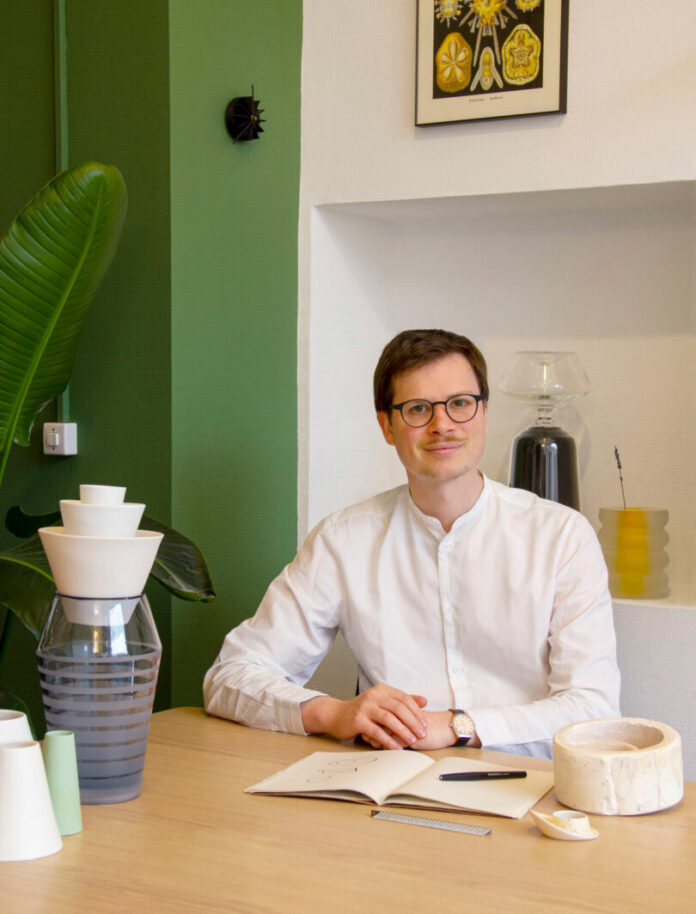Lausanne-based designer Renaud Defrancesco has always been interested in how experimentation often leads to significant breakthroughs, and the molded plywood leg splint by Charles and Ray Eames is a prime example. “It represents a key moment in their exploration of material innovation and form,” says Defrancesco. “By bending and layering plywood, they managed to give it both strength and curvature, turning it into something functional and elegant.”
Defrancesco earned an undergraduate degree in industrial and product design, and the support of his family was essential as he began his journey. He approached his early concepts with youthful vigor, sketching every day. His first commission, however, marked an important shift. When he designed a series of door handles for an architect, his passion became a profession.
Renaud Defrancesco \\\ Photo: Courtesy of Renaud Defrancesco Studio
This Swiss designer founded his eponymous firm in 2018, partnering with local artisans to create pieces that balance contemporary aesthetics and essential function. More than simply emphasizing seasonal launches, he constantly challenges preconceived notions, from an individual’s relationship to objects to environmental impact.
Each project offers different experiences for Defrancesco, who credits a team of creative minds with helping him bring his ideas to life, and embracing trial and error. He balances a respect for tradition with a future-forward approach guided by new technologies.
No matter what he is working on, Defrancesco revels in every step of the design process. “From initial research to collaboration, to visiting the makers and finally holding the finished object in my hands, each phase brings its own energy,” he notes. “But perhaps the most rewarding part is seeing these items find a place in someone’s home and daily life.”
Today, Renaud Defrancesco joins us for Friday Five!
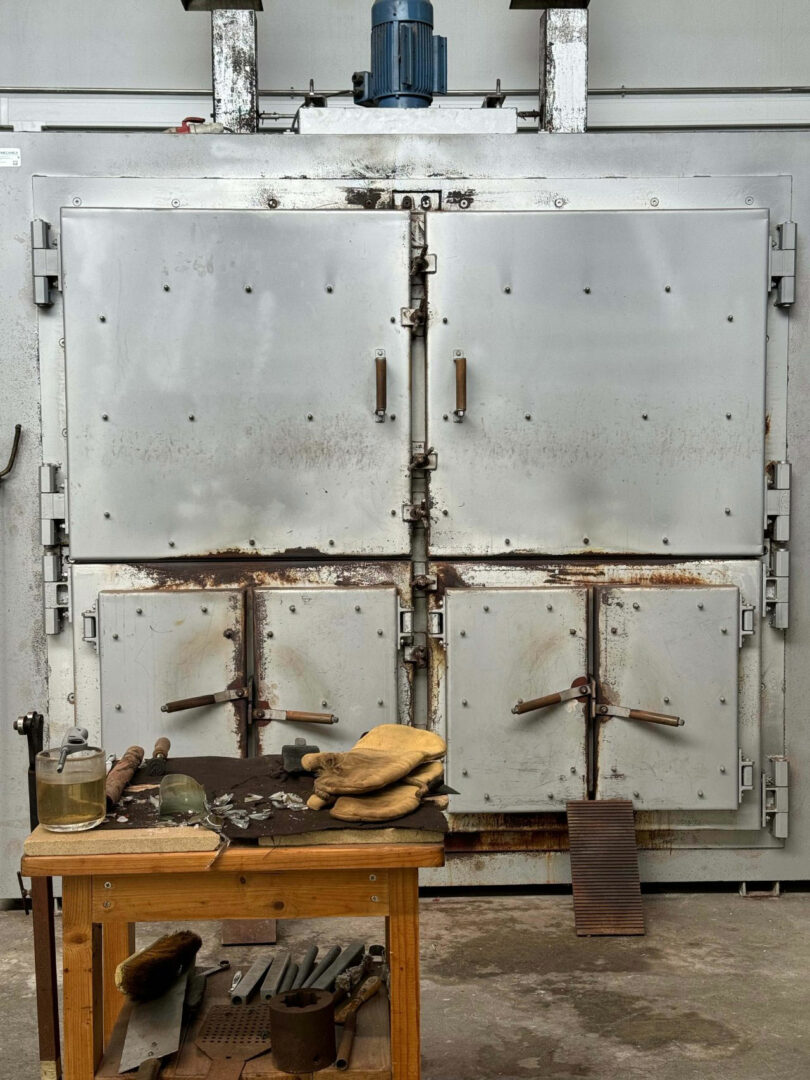
Photo: Courtesy of Renaud Defrancesco Studio
1. Craftsmanship
This image was captured in the workshop of a glassmaker. The glow of the furnace, the rhythm of the hands shaping the material, the quiet concentration. Craftsmanship inspires me deeply. Being in direct contact with artisans who give form to raw matter is essential in my work. Each encounter opens the door to a new world, full of knowledge, gestures, and traditions that can be challenged, revisited, reimagined. It’s in these exchanges that ideas take root and grow into something truly meaningful.
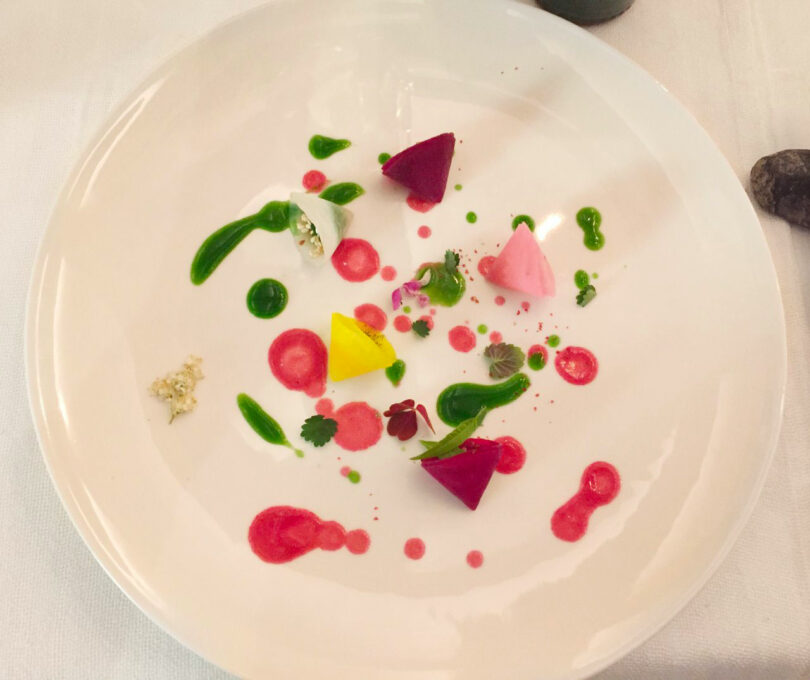
Photo: Courtesy of Renaud Defrancesco Studio
2. Food
Food is another great source of inspiration. There is so much creativity in the world of gastronomy, and I’m fascinated by the way chefs combine textures, colors, rituals, and memories into one sensory experience. Like in design, it’s about creating something beautiful, useful, and full of intention. A good meal, like a good object, stays in your mind long after the moment has passed.
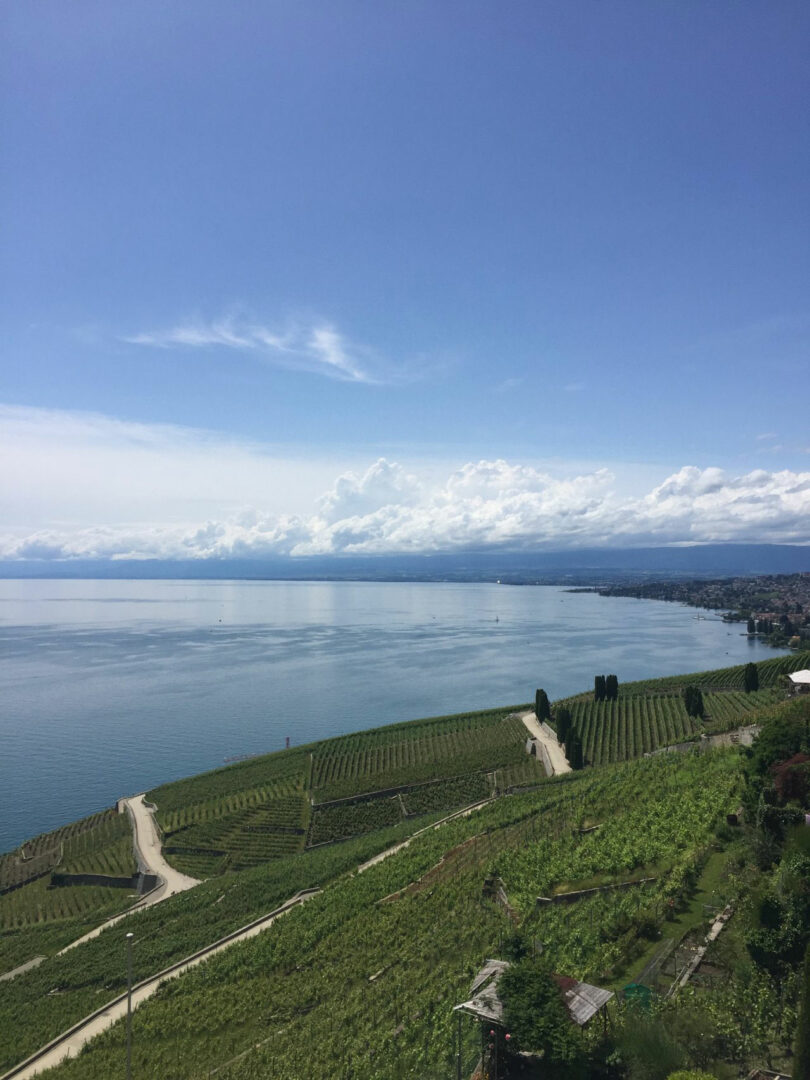
Photo: Courtesy of Renaud Defrancesco Studio
3. Nature
Nature has always been a refuge and a source of inspiration. I’m fortunate to live in a beautiful region, surrounded by lakes, forests, and mountains. I have my favorite places where I go to breathe, reflect, and reconnect. Stepping away from the daily rush allows me to see things more clearly, to notice details, patterns, and energies that feed my creative process. In nature, everything has its own rhythm, its own harmony and that’s something I try to translate into my work.
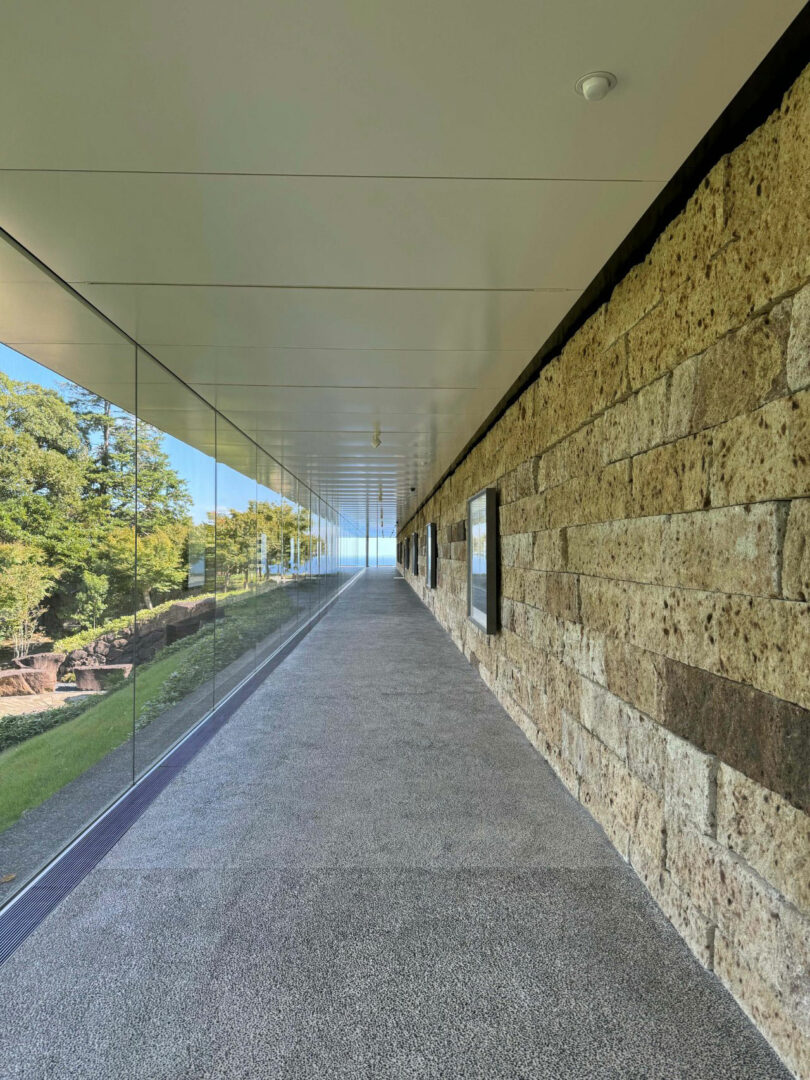
Photo: Courtesy of Renaud Defrancesco Studio
I deeply admire the work of Hiroshi Sugimoto. His relationship with light is fascinating. There’s a calm, almost meditative strength in his pieces – a quiet force that resonates with me. I had the opportunity to visit his Odawara Art Foundation in Japan, and it was a truly moving experience. Light plays a central role in my own practice too: every object I design needs it to come alive, to reveal its depth, texture, and presence. Sugimoto’s approach reminds me that light is not just a technical element but also an emotion, a memory, and harmony.
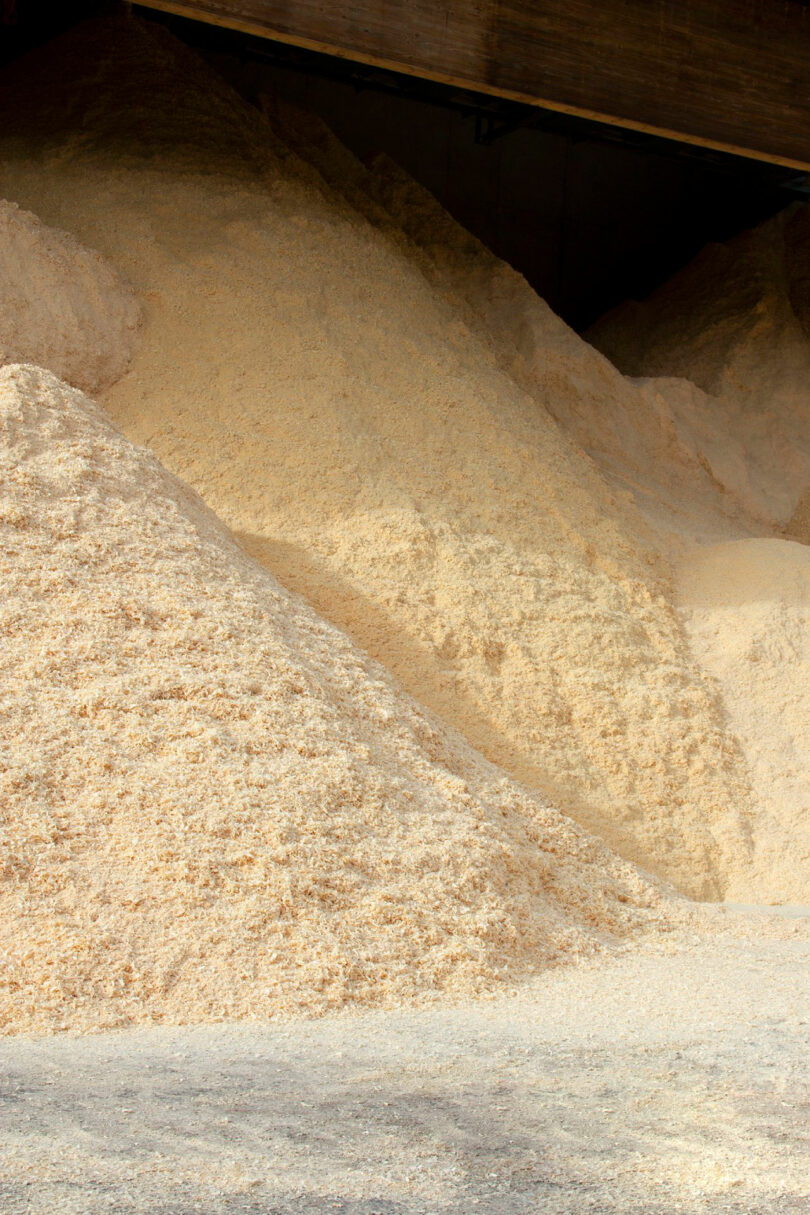
Photo: Courtesy of Renaud Defrancesco Studio
5. Material
Material is often where everything begins for me. It fascinates and guides the creative process. What captures me first is the way a material reacts: how it catches the light, how it takes shape, or how it can still surprise you. Sometimes, inspiration comes from something as simple as a pile of sawdust. That was the starting point for Briket, a project born from the idea of giving value to what is usually discarded. As a designer, I believe we have a responsibility to rethink our use of resources, to work with what’s already around us, and to produce locally whenever possible. A forgotten material can open the door to an entirely new way of designing with intelligence, respect, and imagination.
Works by Renaud Defrancesco:
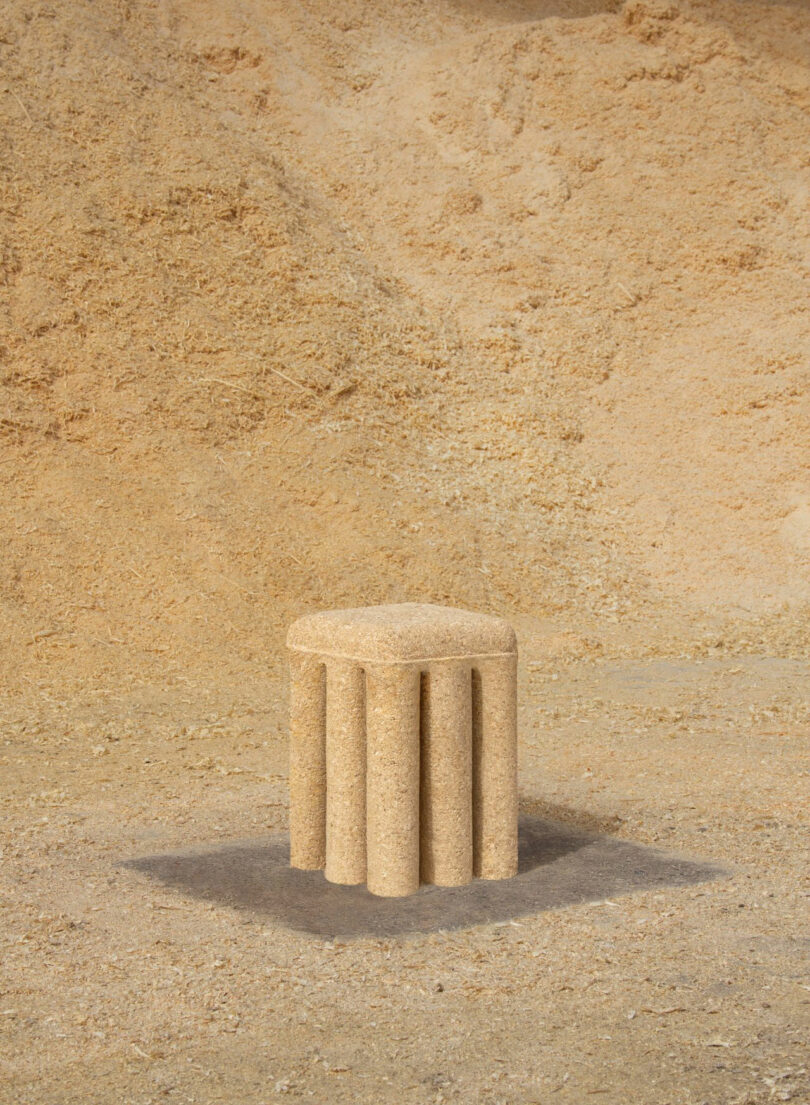
Photo: Courtesy of Renaud Defrancesco Studio
Briket
Briket Stool is an innovative work centered around reusing wood waste, specifically sawdust. Not only is sawdust produced in large quantities, but it also has various recycled applications, including wood pellets used for heating.
Therefore, I envisioned a piece of furniture where the function of the stool is merely a transitory state. Built with nine legs, and devoid of chemical additives or metal components, each part of the Briket stool can be fully recycled through fire for heating.
The manufacturing process of the stool is simple: sawdust is compressed alongside potatoes, which is another natural component wasted by the food industry. The potato starch is used as a natural binder.
In a world facing energy challenges and environmental concerns, the Briket stool serves as a reminder of our responsibility to minimize waste and maximize resource efficiency. The stool utilizes wood waste to create furniture that is environmentally friendly and 100% recyclable.
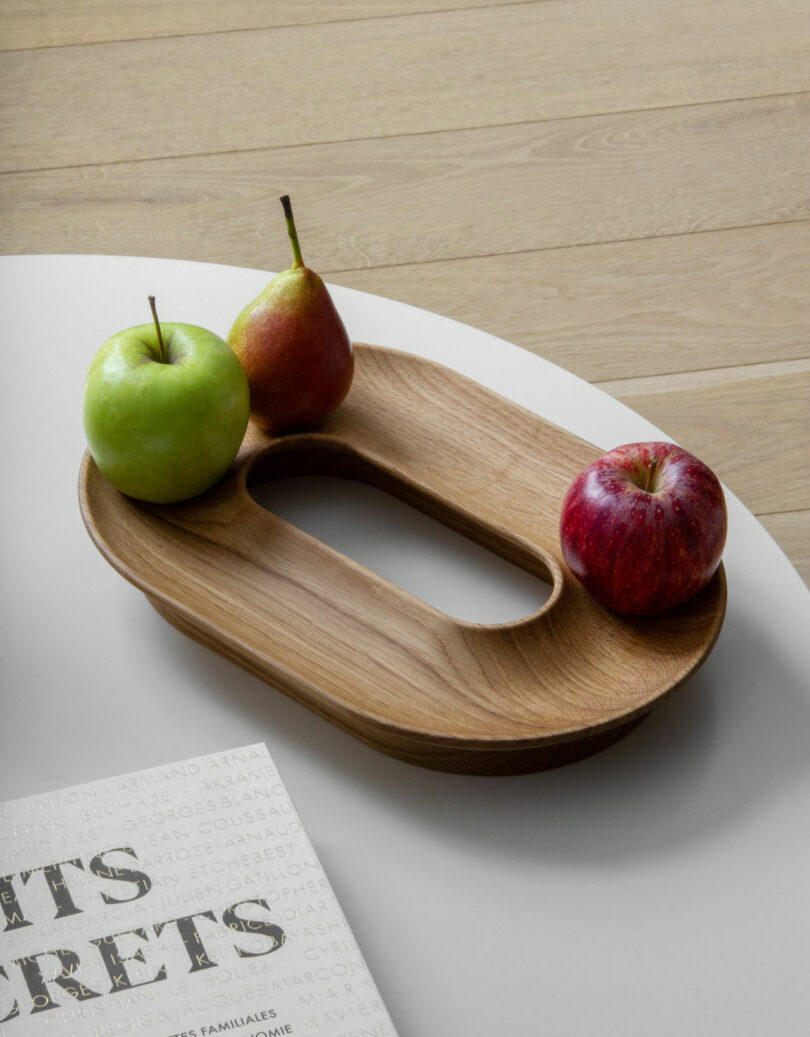
Photo: Courtesy of Renaud Defrancesco Studio
CIRCUIT
The fruit bowl CIRCUIT offers a simple and original way to display your fruits every day. Inspired by marble runs, it adds a playful yet subtle touch to your interior while remaining elegant and functional.
Crafted from oak or maple and available in different shapes, it is carefully made in sheltered workshops in Switzerland, highlighting local craftsmanship.
With CIRCUIT, your fruits are beautifully displayed, bringing a natural and aesthetic touch to your table. This centerpiece can also be used as a sundries tray.
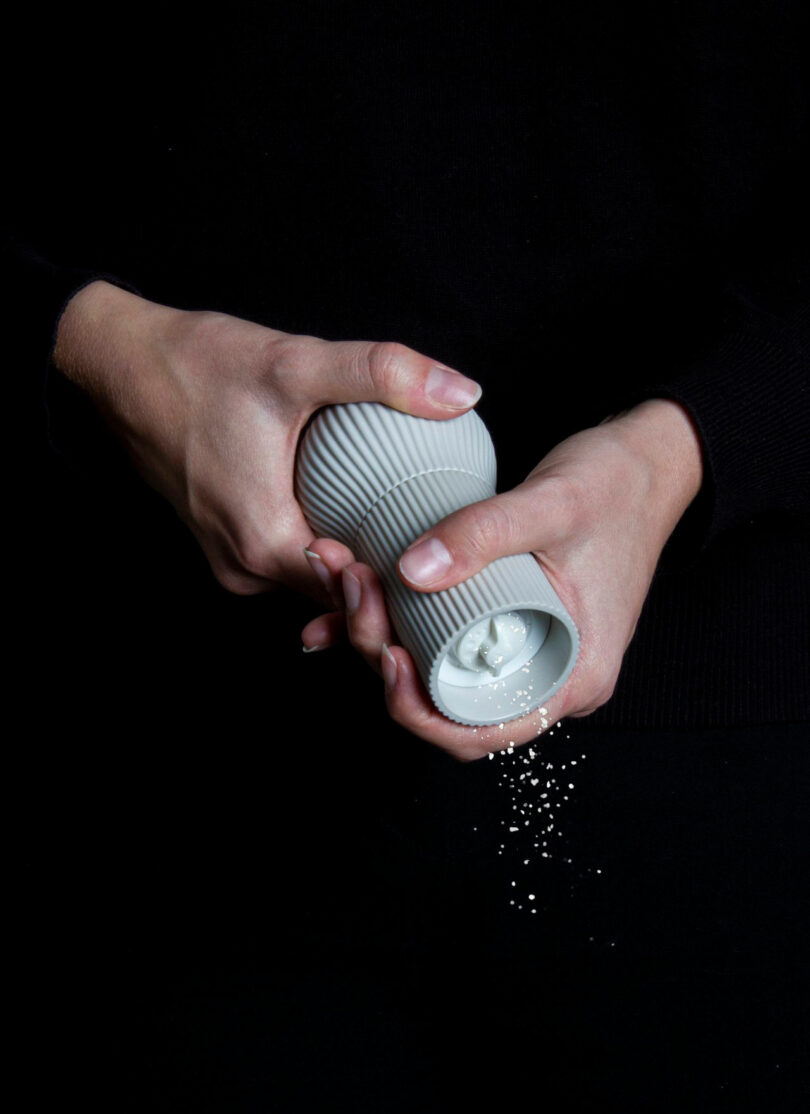
Photo: Courtesy of Renaud Defrancesco Studio
CHEFFY
CHEFFY is the result of research on the handling ability of pepper and salt mills. The shape of the object, which can recall a chef’s hat, allows a good grip even for the weaker hands. The rounded shape on top of the object becomes one with the palm of your hand.
The idea of working on this article came from my grandfather who always told me that it was difficult to turn a pepper mill because there is no good grip and that electric pepper mills do not compete with mechanical ones. This is why I looked into this everyday product by studying the different ways of handling it and making it as ergonomic as possible while giving it an interesting appearance for the kitchen.
The item becomes an essential in the kitchen and the dining room. Equipped with a ceramic mechanism, CHEFFY is powerful and durable. Natural colors on the object evoke the condiments.
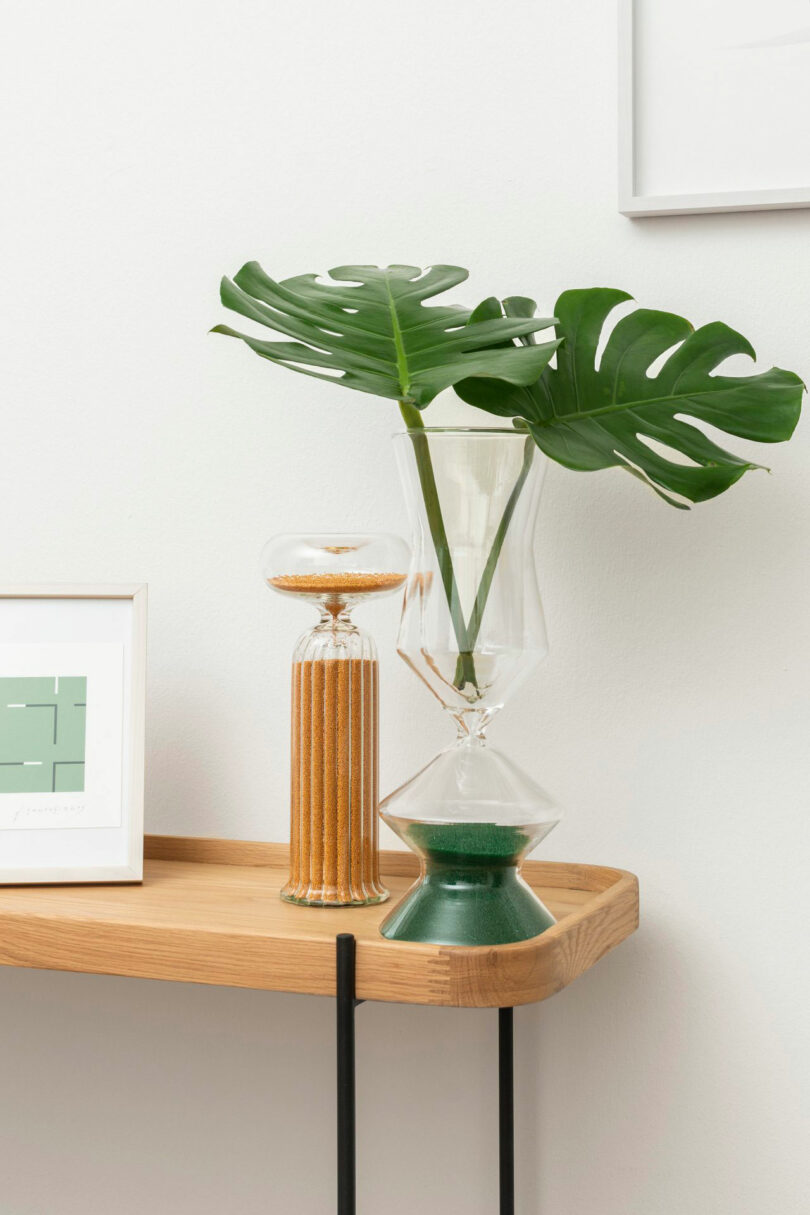
Photo: Courtesy of Renaud Defrancesco Studio
Les Maîtres du Temps
In a society where time is more and more precise and omnipresent, we forget to take time for contemplation. Overwhelmed by objects, we no longer take the time to appreciate them.
Like silhouettes dressed in glass, the “Maîtres du Temps” (“Masters of Time” in French) question us on the perception of the passing of time and the value we give it.
The “Maîtres du Temps” is a series of asymmetrical hourglasses that dilute time with each manipulation. The moving beads captivate the eye and hypnotize it, encouraging you to observe and appreciate the object that is revealed as a vase or a cup.
Each hourglass is hand-blown in a workshop in Switzerland. The development was a collaboration with the glassmakers to test the limits of their know-how.
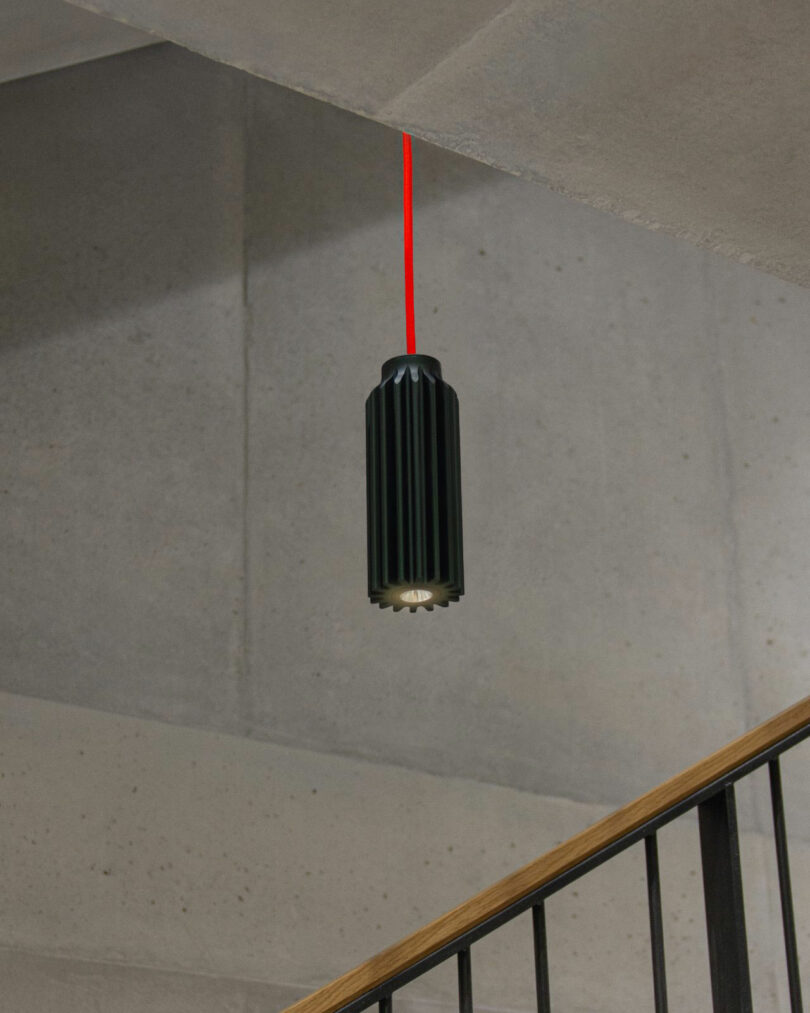
Photo: Courtesy of Renaud Defrancesco Studio
SUNLINE
The collection SUNLINE is made from recycled aluminium profiles, a speciality of the Swiss brand KOV that underlines its commitment to sustainability. The extrusions, inspired by the cooling fins of LEDs, are anodised to give the lamp exceptional strength, while allowing a choice of colours for optimum customisation. The lamps have a sophisticated industrial aesthetic that brings a unique touch of style to any interior.
The result of this collaboration is a series of lamps made in Switzerland, in three distinct formats: a suspension lamp and two floor lamps with different lighting systems. Each SUNLINE part is designed for maximum durability, with all components easily replaceable.
